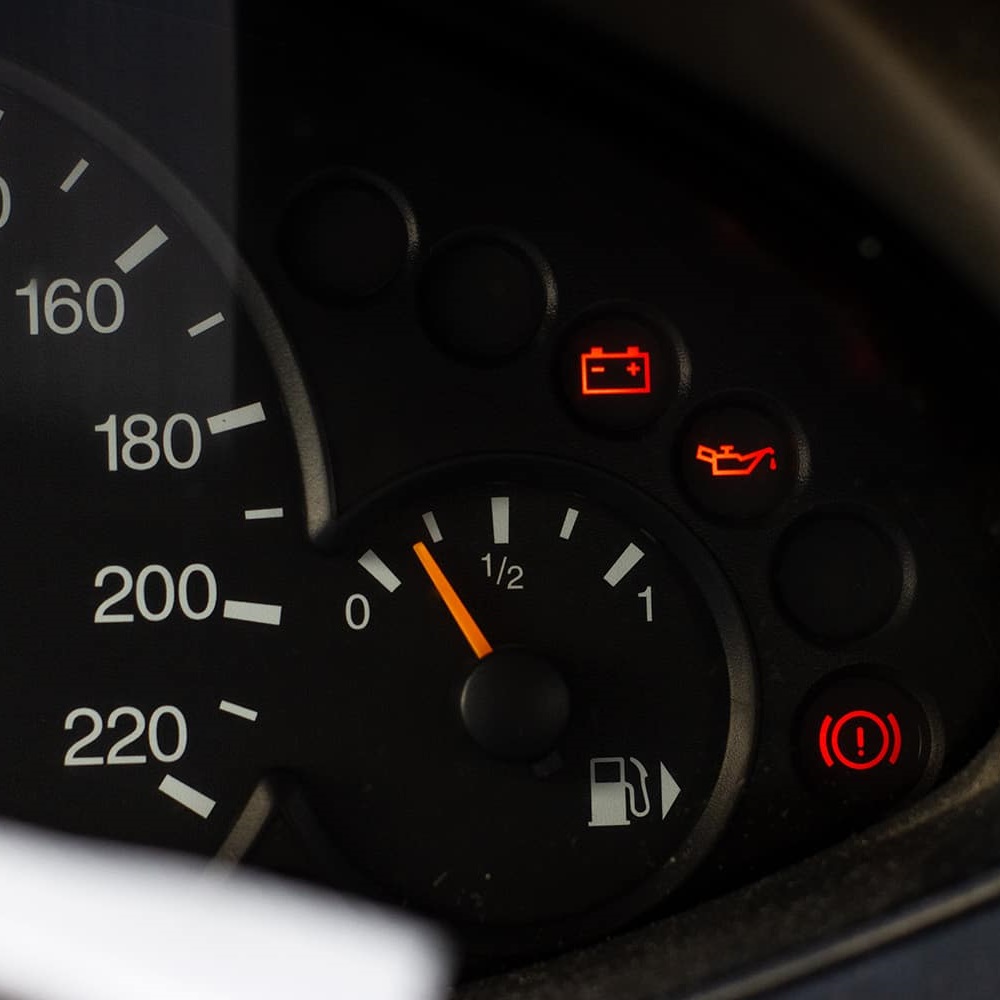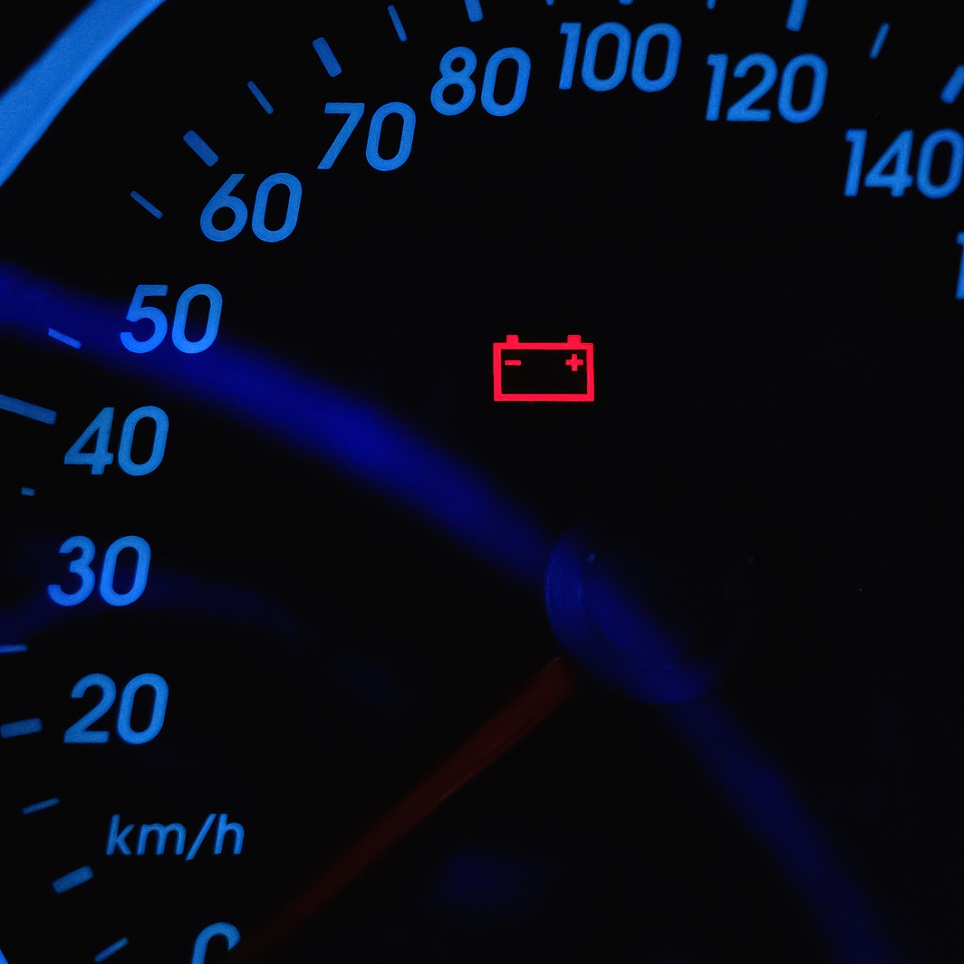Introduction to Car Battery Warning Lights
When the battery light in your car lights up, it’s a call for attention. This little indicator warns you of potential issues with your vehicle’s electrical system. Understanding what this light means is crucial for maintaining the health of your car. A lit battery light could point to various problems, from minor fixes to more serious electrical malfunctions.
The light often looks like a car battery, with a plus and minus sign. Its primary role is to alert you when the car’s charging system is not functioning properly. This could mean trouble for the alternator, an issue with the battery itself, or other related electrical system faults.
It’s key not to ignore this light when it comes on. Continuing to drive could lead to your car stalling or cause damage to other components. Addressing the issue promptly can save you from the hassle and dangers of a breakdown.
If your car’s battery light turns on, take immediate action. Begin by assessing the simplest possibilities, like ensuring the battery terminals are free of corrosion and the cables are tightly connected. If the light remains on, it may signal deeper electrical troubles that require a professional’s touch.
In the following sections, we will delve into the common reasons behind a battery light warning, what steps you can take yourself, and when it’s time to seek expert assistance. Keep an eye on your car’s battery light; it’s a small signal that could mean big news for the well-being of your vehicle.

Understanding the Role and Importance of Your Car’s Battery
Your car’s battery is vital for its operation. It powers the starter motor, lights, and ignition system. It also provides energy to run accessories when the engine is off. In simple terms, it’s like the heart of the car’s electrical system.
When the battery is working well, your car starts smoothly and runs all electronics without issues. It stores electrical energy generated by the alternator while the engine runs. This ensures you have a reliable source of power for your next start-up.
However, batteries can fail for several reasons. They can age and lose their charge capacity, or they might get damaged. Connections could also become loose or corroded. If the battery is weak or failing, it affects the car’s performance.
When the battery light on your car’s dashboard comes on, it’s often a sign of trouble. It could mean the battery is not charging, which can bring several risks. Your car might stall, or you could be left stranded with a vehicle that won’t start.
It’s important to keep the battery in good health to avoid problems. Regular checks and maintenance can help extend its life. Replacing a battery on time is much better than dealing with a breakdown.
So, when you see the battery light car warning, take it seriously. Check the battery soon or visit a mechanic. It helps ensure your car remains reliable, safe, and ready to go when you need it.
The Usual Suspects: Common Reasons for a Battery Light Illumination
When your car’s battery light turns on, it’s often a signal of a few common issues. Here are some prime suspects that could cause this warning light to illuminate.
Alternator or Voltage Regulator Issues
Your alternator charges the battery and keeps the electrical system running. If the alternator or voltage regulator fails, the battery light may come on. Symptoms include dim lights and dead batteries. It’s important to address these as soon as possible.
Loose or Corroded Battery Cables
Battery cables that have loosened or corroded can interrupt the charge to your battery. This issue may cause the light to turn on. Corrosion looks like a white or greenish powder. Cleaning and tightening cables often fixes the problem.
Battery Age and Health
Batteries usually last between three to five years. An old or weak battery may not hold a charge, triggering the light. If your battery is over three years old, consider testing or replacing it.
Faulty Wiring and Electrical Problems
Damaged wires can prevent proper charging of your battery. This is a complex issue that might need a professional’s touch. But it’s essential to fix to prevent future electrical problems.
Your car relies on the battery for all electronic functions. So when the battery light comes on, it’s not something to ignore. Identifying and solving the problem early can save money and avoid later breakdowns.
Immediate Actions: What to Do When the Battery Light Comes On
When you notice the battery light car warning, it calls for immediate action. A lit battery light signifies an issue with your vehicle’s electrical system. This could be a minor hiccup or a sign of a more severe problem. Regardless, it’s important to respond promptly to prevent further damage to your car. Here are the steps you should take:
- Turn off electrical accessories: Reduce the load on your battery by turning off non-essential accessories like the radio and air conditioning.
- Check the battery gauge: Observe if the battery charge gauge—if your car has one—is lower than usual, indicating charging problems.
- Inspect the battery: Safely pull over and inspect the battery for obvious signs of damage or corrosion.
- Tighten connections: Make sure the battery cables are tight and secure on the terminals.
- Limit your drive: Plan to get your car to a mechanic as soon as you can, preferably by driving a short distance.
- Call for assistance: If necessary, call for roadside assistance or a tow to get your vehicle to a service center.
It’s essential to address battery light warnings right away to avoid being stranded or causing further damage to your vehicle. Remember, safety comes first, so if you’re unsure about checking the battery yourself, it’s better to seek professional help immediately.
Troubleshooting Steps: Diagnosing the Problem Yourself
When the battery light car warning illuminates, you can often take some initial troubleshooting steps yourself. By addressing simple and common issues, you might save a trip to the mechanic. Here’s what to do:
Inspecting for Corrosion and Loose Connections
Start by checking the battery for signs of corrosion or loose cables. Corrosion appears as a white or bluish substance on the terminals. Loose cables can disrupt the electrical flow, causing the light to turn on. Tighten any loose connections and note any corrosion.
How to Clean Battery Terminals Properly
To clean the terminals, first turn off your car and ensure it’s safe. Use a mixture of baking soda and water to scrub the corrosion thoroughly. After cleaning, dry off the terminals completely. This can help restore a strong electrical connection.
The Significance of Tightening Cable Clamps
Ensure the cable clamps are secure around the battery terminals. Use a wrench to tighten them if needed. A solid connection is critical for the charging system to work correctly.
By following these simple troubleshooting steps, you can resolve straightforward issues with your battery light car warning. Remember to wear safety gloves and eye protection when handling the battery. If the light remains on after these steps, it may indicate a more serious issue. In that case, it’s wise to seek professional assistance.
When to Seek Professional Help: Mechanical and Systematic Issues
When you’ve done all you can and the battery light car warning persists, it’s time for expert help. Here are signs that indicate a deeper issue needing a mechanic’s attention:
- Persistent Battery Light: If your light stays on after you’ve cleaned terminals and tightened connections, there may be a mechanical issue.
- Odd Sounds or Smells: Unusual noises or smells coming from the engine area can mean alternator problems.
- Electrical Failures: If devices like headlights or the stereo are not working right, there could be a systematic issue.
- Car Won’t Start: If the car fails to start even with a charged battery, the starting system might be at fault.
Mechanics can test the battery, alternator, and other components. They have tools to diagnose the issue quickly. They’ll pinpoint the problem and suggest the right fix.
Remember, a lit battery light car warning could mean small or serious troubles. Don’t risk guessing if you’re unsure. A professional can save you time and money in the long run. They make sure your car is safe and reliable. Book a visit with an auto care center if your battery light remains on. It’s the best way to take care of your vehicle and keep you safe on the road.
The Impact of Ignoring Your Battery Warning Light
Ignoring the battery light car warning can lead to more problems. Let’s look at what happens if you don’t pay attention to this critical dashboard signal.
- Risk of Being Stranded: The primary risk of ignoring the light is getting stuck with a car that won’t start.
- Possible Vehicle Damage: When the battery isn’t charging, it may harm the alternator or other electrical components.
- Safety at Stake: A failing battery could cause your car to stall while driving, which is dangerous.
- Increased Repair Costs: Ignoring the issue may lead to bigger, more expensive fixes later.
- MOT Failure: For those in places with an MOT test, a lit battery light might mean failing the test.
You must address the battery light car warning as soon as you see it. This small light can mean big problems that are not just costly but unsafe too. If you’re unsure, seeing a mechanic is often the best choice. They can help fix the issue before it gets worse. Don’t wait until it’s too late! Your car’s health and your safety depend on it.
Preventative Measures and Routine Checks to Avoid Battery Light Warnings
To prevent the dreaded battery light car warning, regular maintenance is key. Take proactive steps to avoid electrical issues. Here are preventative measures and routine checks you can incorporate into your car care routine:
Regular Battery Inspections
Make it a habit to inspect your battery periodically. Look for any signs of damage or corrosion. A healthy battery should be clean and free of residue on the terminals.
Check Battery Connections
Ensure that the battery connections are secure. Loose cables can cause charging issues. Tighten any loose connections you may find during your checks.
Clean Battery Terminals
Keeping battery terminals clean can prevent electrical problems. Use a baking soda and water solution to remove buildup. Remember to do this safely with the engine off.
Battery Charge Testing
Test your battery’s charge regularly, especially before long trips. Most auto shops offer this service. They can tell if your battery is holding a charge properly.
Alternator Checks
Have your alternator checked by a professional during routine services. The alternator keeps your battery charged while the engine is running, so it’s vital to its health.
Keep an Eye on Battery Age
Know your battery’s lifespan. Most last three to five years. Consider replacement if it’s nearing the end of this range.
Seasonal Maintenance
Batteries can be affected by extreme temperatures. Have your battery and charging system checked before summer and winter.
By following these simple steps, you can often avoid the battery light car warning. Maintain a regular check-up routine to catch issues early. Addressing small problems promptly can save you from bigger headaches down the line. Keep your car’s heart beating strong with diligent battery care!


